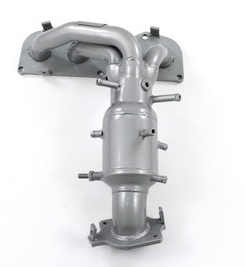The catalyst efficiency threshold set by the manufacturers is generic and does not consider the smog requirements of each state. Each state has different smog emission standards. They can be lower, higher, or not at all. Because the catalyst efficiency settings don't match the states smog requirements, you can fail the inspection for a catalyst efficiency CEL, yet pass the state smog test. Many state inspections today skip the smog tests for an OBD-II computer status check. Regardless, prior to inspection you need to extinguish all CEL's.
There are several causes for a P0420 starting with oil consumption. But we won't get into that, this discussion is about extinguishing the CEL for $6 using something called a spark plug anti fouler. The spark plug anti-fouler (also called non fouler) does not influence or change any any of the smog test emission results. The anti-fouler is not a repair to the catalytic converter so one day you will fail the state smog emissions test. Or it will plug up on you, causing stalling, etc. It is then you will need to replace the cat. But because the CEL first appears at 90-95% (good), replacing the catalytic converter could be years from now.
How it works
The pre-cat (upstream, front) O2 sensor takes an initial reading of exhaust gasses. The post-cat (downstream, rear) O2 sensor takes a second reading. The ECU compares the two. If the difference is small, the catalyst efficiency is low and you get the CEL. If the difference is large the catalyst efficiency is high, no CEL. Moving the post-cat (downstream, rear) O2 sensor out of direct exhaust flow will will result in a reading of less exhaust gas coming out of the catalytic converter. The ECU will calculate the difference as large = high efficiency. Out goes the light after a few driving cycles.
Installation
- Purchase the correct size Dorman HELP! spark plug anti-fouler thread size for your car. The O2 thread size is usually the same as your spark plug. There will be 2 in the package.
- Remove the post-cat (downstream, rear) O2 sensor and test that the thread size is correct. Don't tighten too far yet! What you will notice is the sensor tip is too long to completely screw into the anti fouler.
- Drill out the end of ONE anti-fouler with a 1/2" drill bit so the sensor tip can fit through.
- Screw the anti-fouler into your O2 sensor and screw the anti-fouler into the exhaust.

